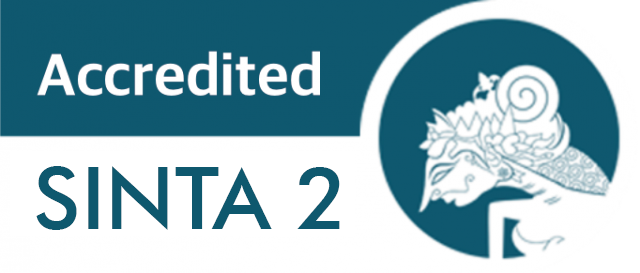Author Guidelines
Author Guidelines
TARBIYA: Journal of Education in Muslim Society is a peer-reviewed academic journal that focuses on educational studies within Muslim societies. It is published twice a year (June and December) by the Faculty of Educational Sciences, UIN Syarif Hidayatullah Jakarta, in collaboration with HSPAI (Scholars of Islamic Education) and PSPII (Perkumpulan Sarjana Pendidikan Islam Indonesia).
The journal publishes original research articles, review papers, and scholarly communications addressing education in Muslim contexts around the world. All submitted manuscripts must be original, unpublished, and not under consideration elsewhere. Each submission undergoes a rigorous double-blind peer-review process, which may take several weeks.
Manuscript Requirements
- Manuscripts must be written in English (5,000–12,000 words) including text, tables, figures, references, and appendices.
- Each article must include an abstract (maximum 150 words) in both English and Indonesian, and up to 5 keywords.
- Foreign terms or non-English words should be translated or explained when first mentioned.
- Quotations, passages, and terms from other languages should be italicized.
- All manuscripts must be submitted through the online system: http://journal.uinjkt.ac.id/index.php/tarbiya or via email: tarbiya-fitk@apps.uinjkt.ac.id.

Manuscript Structure (IMRAD Format)
Each submitted manuscript should follow the IMRAD structure (Introduction, Methods, Results, and Discussion), followed by Conclusions, Recommendations, and References.
1. Title and Author Information
The title should be concise (maximum 16 words) and informative. List the full names of all authors (without academic titles), institutional affiliations (including department and university), and the corresponding author’s name with a valid email address.
2. Abstract
The abstract must be clear, concise, and descriptive, providing a brief overview of the research problem, objectives, methods, main findings, and conclusions. It should not exceed 300 words and should be written in 11 pt Times New Roman font. Foreign contributors may provide the abstract in English only.
3. Introduction
The introduction should describe the research background, theoretical framework, and objectives. Authors must review previous studies, identify existing research gaps, and state the novelty or contribution of the current work. The objectives of the research should be explicitly stated at the end of this section.
4. Methods
This section should describe the research design, data sources, participants, instruments, and analytical procedures in sufficient detail to allow replication. If established methods are used, authors should cite relevant references and describe only modifications or innovations made.
5. Results and Discussion
The Results section should present findings clearly and logically, supported by tables or figures where appropriate. Avoid unnecessary repetition of data in text and visuals. The Discussion should interpret the findings in the context of the research question, relate them to previous studies, and explain their theoretical or practical significance in the field of education in Muslim societies. Avoid excessive citations or repetition of results.
6. Conclusion
The conclusion should answer the research objectives, summarize the key findings, and explain their contributions to theory or practice. It should also highlight the implications for policy or future research directions. Avoid repeating the abstract or listing results without interpretation.
7. Recommendations
Authors may include specific recommendations based on the findings for policymakers, educators, or future researchers.
8. References
All sources cited in the manuscript must appear in the reference list. References should follow the APA 7th edition style, and only include works cited in the text. Authors are encouraged to use reference management tools such as Mendeley or Zotero.
Examples:
- McKenzie, J. A. (1993). Power learning in the classroom. California: Corwin Press, Inc. [Book]
- Yu, A. Y., Tian, S. W., Vogel, D., & Kwok, R. C. (2010). Can learning be virtually boosted? An investigation of online social networking impacts. Computers & Education, 55(4), 1494–1503. [Journal]
- Clancey, W. J. (2013). Transfer of Rule-Based Expertise through a Tutorial Dialogue. PhD Dissertation, Department of Computer Science, Stanford University. [Thesis]
- Ivey, K. C. (2012, September 2). Citing Internet sources. Retrieved from http://www.eei-alex.com/eye/utw/96aug.html [Website]
In-text citation examples:
Zaidan (2005, p. 15) argues that education should promote freedom and social justice. Alternatively: Education should promote freedom and social justice (Zaidan, 2005, p. 15).
Submission and Review Process
- Manuscripts must be submitted via the online portal: Online Submission.
- If technical issues arise, contact the Editorial Office via email: tarbiya-fitk@apps.uinjkt.ac.id.
- Every submitted paper is reviewed by at least two independent peer reviewers. Decisions for acceptance, revision, or rejection are based on reviewers’ recommendations.
- Revised manuscripts must be resubmitted within three months; otherwise, they will be treated as new submissions.
Publication Ethics and Open Access
TARBIYA: Journal of Education in Muslim Society adheres to ethical standards based on the Committee on Publication Ethics (COPE) guidelines. All articles are published under a Creative Commons Attribution-ShareAlike (CC BY-SA) license, allowing free access, distribution, and reuse with proper attribution.
Editorial Office
Prof. Muhammad Zuhdi, M.Ed., Ph.D. (Editor-in-Chief)
Faculty of Educational Sciences, UIN Syarif Hidayatullah Jakarta
Jl. Ir. H. Juanda No. 95 Ciputat, South Tangerang, Indonesia 15412
Email: tarbiya-fitk@apps.uinjkt.ac.id / jurnal-fitk@apps.uinjkt.ac.id
Website: http://journal.uinjkt.ac.id/index.php/tarbiya











